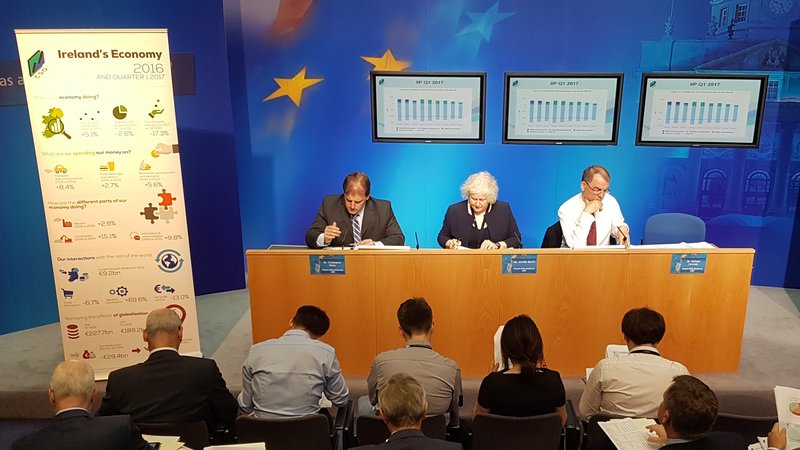The economy—as measured by gross domestic product—grew by 5.1% in 2016, the latest figures from the Central Statistics Office show. This confirms that Ireland was the fastest growing economy in the European Union last year.
At current prices, GDP in 2016 was €275.6 billion ($314.58 billion), the CSO figures show, RTE reported.
Using a new measure of the size of the economy that removes much of the volatility in Irish national accounts due to the activities of multinational companies, aircraft leasing and intellectual property accounting, the size of the Irish economy was €189.2 billion. This is measured under a modified version of gross national income, known as GNI.
The new measure is supplementary to GDP, which remains the official measure of the economy for international reporting.
The new GNI measure is intended to give a more accurate picture of the underlying state of the Irish economy, when the large movements of intellectual property and aircraft leasing are filtered out. Using this new modified indicator, the economy grew by 9.4% last year.
This is most clearly seen in the debt ratio. Measured as a percentage of GDP, the government’s debt ratio is 73%. But measured against modified GNI, it shows a debt ratio of 105%.
Going back over the past few years, the modified measures shows government debt peaking at almost 160%, compared to a debt to GDP ratio of 120%. While the debt ratio has fallen over the past five years, the GNI figure indicates a much higher level of debt.
It also increases the relative size of the budget deficit. In 2016 it was 0.7% of GDP, but using GNI, the deficit was 1%. In 2012 the deficit was 8% of GDP, but 10.5% of GNI.
Meanwhile, today’s figures from the statistics office show that the economy slowed by 2.6% on a GDP basis in the first quarter of this year. Preliminary National Accounts figures from the CSO for the first three months of the year show a decrease of 2.6% in GDP and a decrease of 7.1% in GNP.
But the country’s GDP still stood 6.1% higher than the same time last year after data for the previous quarter was revised up sharply to 5.8% from 2.5%. Growth for all of last year was nudged down to 5.1% from 5.2%, the CSO said.
GNP growth was revised up to 9.6% from 9%, while personal consumption of goods and services showed growth of 3.3%, previously estimated at 3%, for 2016.


